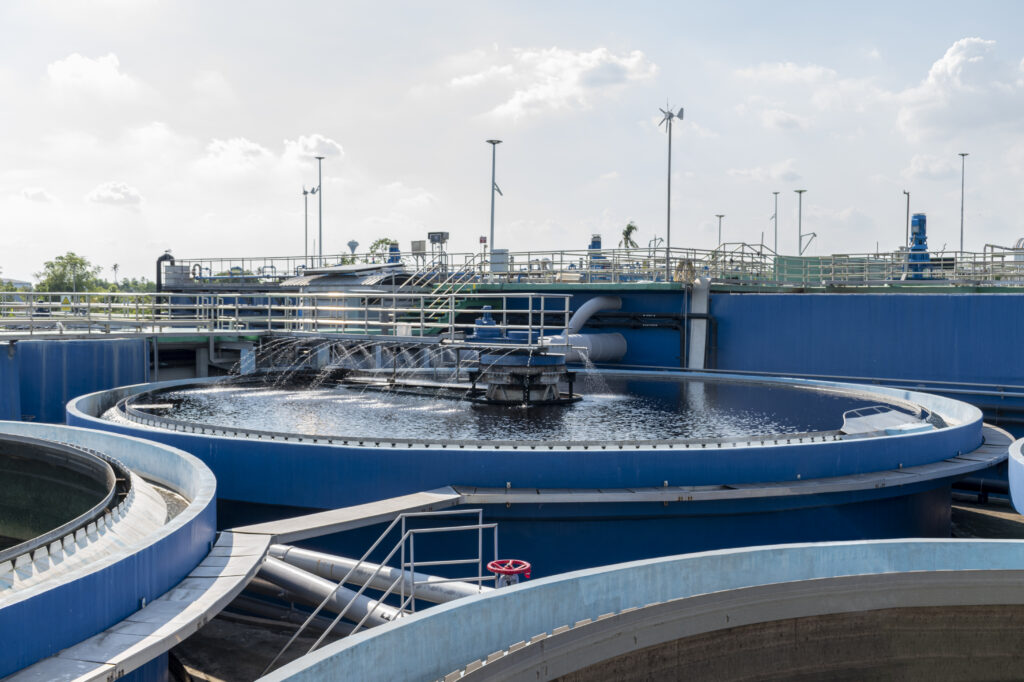A team from BioSS (Biomathematics and Statistics Scotland) played an important role in understanding the spread of COVID-19 in Scotland by developing a system capable of rapidly analysing data tracking the presence of the virus in wastewater samples.
Statisticians from BioSS, part of the James Hutton Institute, began work on the project in December 2020, initially led by Andrew Roberts, head of operations, assisted by Dr Zhou Fang. “It was a highly collaborative effort we were under serious time pressure to deliver results,” says Dr Claus Mayer, principal researcher in statistical genomics and bioinformatics at BioSS, who joined the project in 2021 and took over responsibility for it in 2022.
Project partners include Scottish Water which collected weekly wastewater samples from more than 100 sites across Scotland, the Scottish Environment Protection Agency which analysed the samples, and the Scottish Government which required weekly project updates to inform its public health strategy for tackling COVID-19. University teams were also involved, including Edinburgh’s Roslin Institute, with BioSS in charge of devising a bespoke system to model, validate and interpret WBE datasets.
It was the first time BioSS had developed a data modelling system related to wastewater-based epidemiology (WBE), which involves sampling to identify the presence of viruses or other elements that could pose a serious public health risk.
The practice of WBE began after scientists discovered that people infected by certain viruses shed small amounts of it in their stools and that this can be detected in wastewater. Helpfully, even if people have not undergone virus testing, WBE provides a means of detecting a virus and tracking its spread in the community, making it an important source of intelligence on public health.
Mayer says: “Wastewater-based epidemiology is not new. Researchers from Yale University used it detect the Polio virus in the United States in 1939. But since the COVID-19 virus outbreak, its potential as an important public health surveillance tool has become increasingly recognised.”
Did you know…
Wastewater-based epidemiology (WBE) began after scientists discovered that people infected by certain viruses shed small amounts of it in their stools and that this can be detected in wastewater…Even if people have not undergone virus testing, WBE provides a means of detecting a virus and tracking its spread in the community.

The project marked a departure from BioSS’ more typical projects which commonly involve several years of intensive research.
“This was different and it was a new challenge for us,” says Mayer. “We had to be very pragmatic because we needed to build a model very quickly. It was a balance between doing something important from a science perspective but also doing something that could deliver critical data quickly.”
The Scottish COVID-19 wastewater project involved tracking fragments of Covid ribonucleic acid (RNA) in wastewater samples. RNA is present in all living cells and has structural similarities to DNA. Tracking Covid viral RNA in wastewater samples and correlating it with Covid case data enabled the team to track the spread of the virus and to pinpoint ‘hotspots’ of infection across all 14 NHS Scotland health board areas.
BioSS faced its biggest project challenge when Omicron emerged as the most prevalent strain of the COVID-19 virus in December 2021, replacing the previously dominant Delta variant. At the same time the Scottish Government also started a variant sequencing program where BioSS again was involved in analysing and reporting. This new data source allowed the team to monitor the progression from Delta to Omicron.
Changing data patterns led the team to suspect that Omicron resulted in far lower amounts of RNA in samples, a development requiring urgent investigation to ensure data modelling remained accurate. BioSS accessed additional case data that enabled the team to test several theories and rigorous analysis proved their hypothesis about lower amounts of virus RNA to be correct.
Consequently, the project avoided the risk of underestimating the spread of the Omicron variant in Scotland.
An advantage of WBE analysis is that it enables scientists to track virus spread in the community even if people have no virus symptoms and have not undertaken COVID-19 tests. This is assuming greater importance as COVID-19 testing has become less frequent. It had already fallen globally by between 70% and 90%, according to the World Health Organisation (WHO) by April 2022. (Source: Reuters)
International efforts to use WBE to monitor a range of viruses are intensifying, with the United States, Australia and the European Union looking at testing wastewater from planes and at airports.
BioSS is continuing to track COVID-19 in wastewater in Scotland and Mayer says the team has also conducted pilot projects to detect the polio virus and also adenovirus, which causes serious respiratory illness.
The polio virus, one of the first deadly viruses to be detected using WBE, was detected in the UK last year for the first time since 1984. Almost eight decades after scientists first identified the potential of wastewater analysis as a public health surveillance tool, BioSS is at the forefront of efforts to ensure that today’s data sequencing keeps pace with the emergence of both old and new pathogens around the world.
This was different and it was a new challenge for us. We had to be very pragmatic because we needed to build a model very quickly. It was a balance between doing something important from a science perspective but also doing something that could deliver critical data quickly.
Dr Claus Mayer, principal researcher in statistical genomics and bioinformatics at BioSS
